Looking amazing in their frosted orange skins, these French Orange Sorbets are made without an ice cream maker. 3 ingredients. Oranges, sugar and a little lemon for extra zest. The perfect treat for a hot day!
Jump to:
🍊 Ingredients

- Oranges. Sweet oranges with lots of juice are the oranges of choice here. Valencia, Navel and Blood Oranges will all work well.
- Lemon. Don't leave out the lemon. The tartness and acid of the lemon help to enhance the flavour of the frozen sorbet.
- Sugar. Keep to a white sugar so that the flavour of the orange can shine. Caster sugar works best since it will be quick to dissolve. Otherwise granulated sugar is fine.
See the Recipe Card below for details of quantities and the full recipe.
🍽 Equipment
- small sharp knife (for removing orange pulp from orange skins)
- 2 bowls (for collecting orange pulp and mixing orange sorbet)
- hand food mill (mouli) or electric blender
- juice squeezer
- fork (for breaking up sorbet)
- airtight container (for storing the Orange Sorbets when placed in freezer)
🔪 How to make Orange Sorbets without an ice cream maker
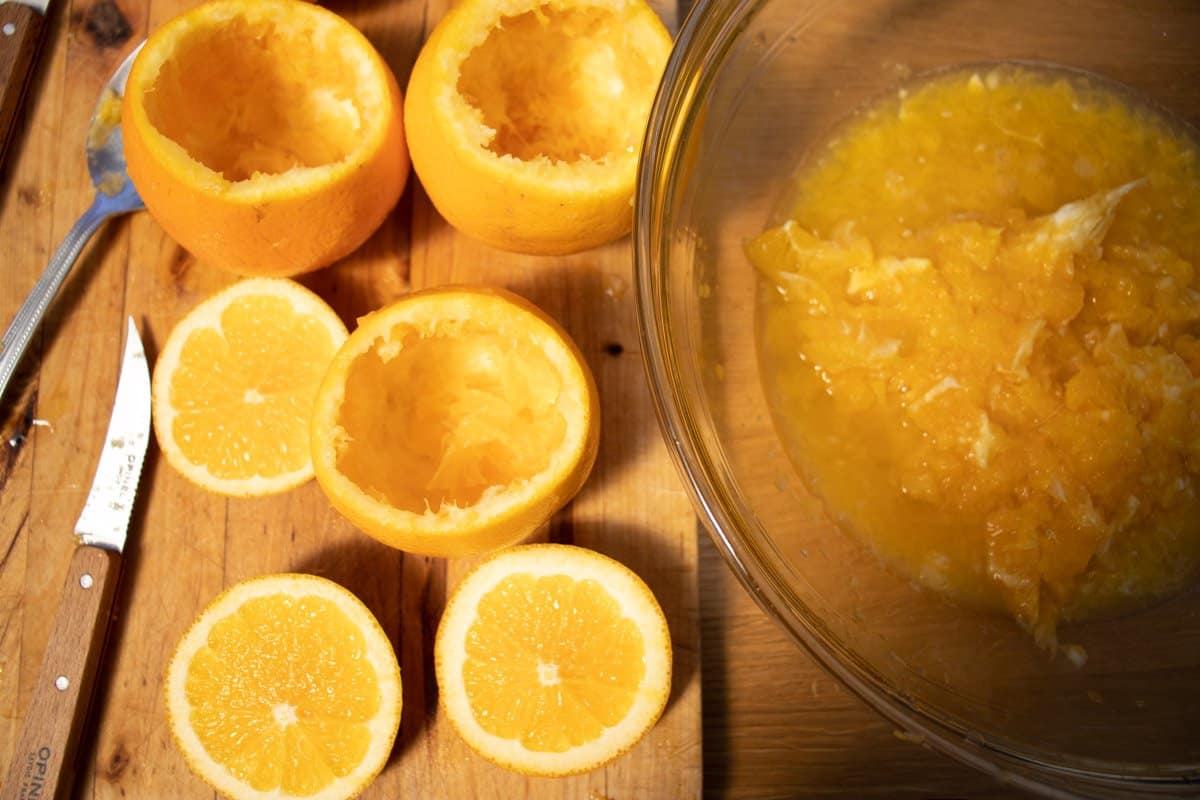
Step 1. Slice the tops off the oranges. Remove the orange flesh from the orange rind using a sharp knife. Put the orange flesh (pulp and juice) into a bowl. Check the orange skins sit steadily on a flat surface. If not, cut a thin slice from the bottom of the orange to make it flat, making sure you do not cut into the hollowed out part.

Step 2. Blend the orange pulp using a hand mouli or an electric blender. The mouli both blends and strains the orange pulp. If using an electric blender, try to remove as much of the pith before blending and strain the orange puree using a wire strainer.

Step 3. Squeeze the lemon juice from the lemon and add to the strained orange pulp. Add the sugar to the fresh juice orange mixture and stir in thoroughly using a fork until completely dissolved.
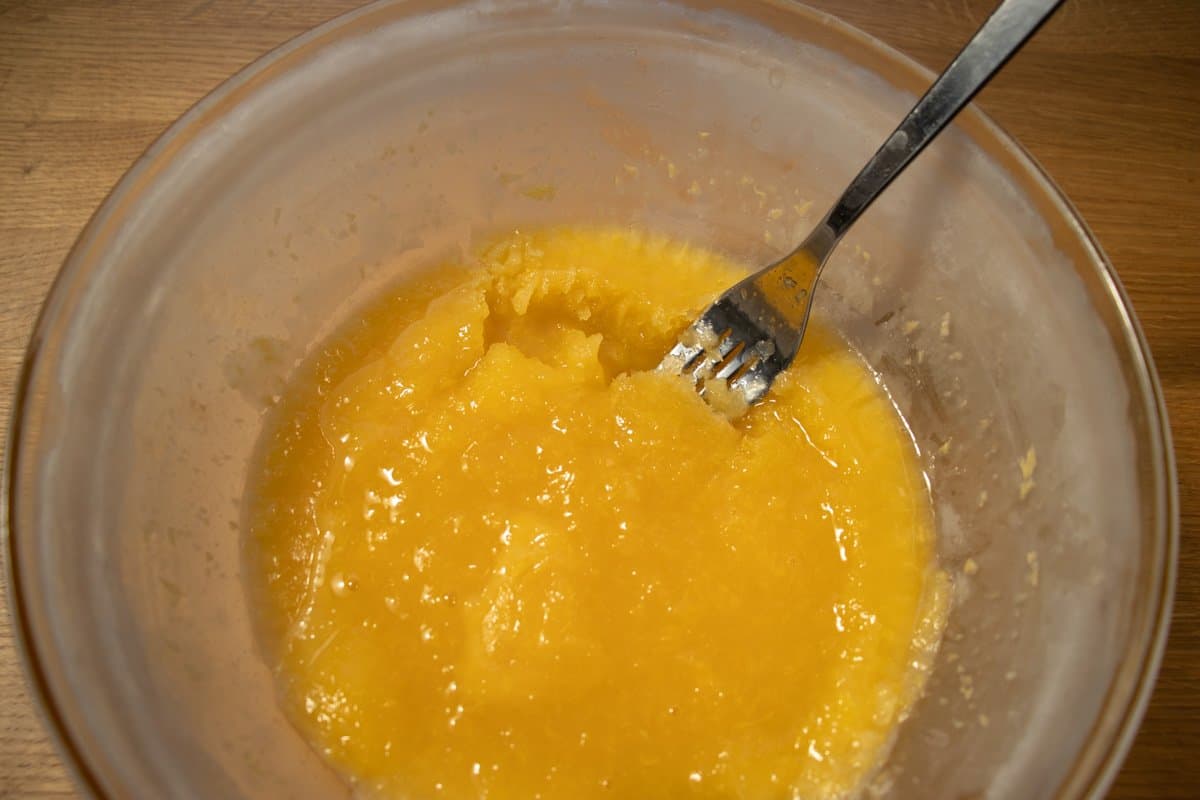
Step 4. Place the bowl containing the orange sorbet mixture into the freezer, until the mixture is half frozen. This takes about 2 to 3 hours. Remove from the freezer and mash the frozen pulp using a fork.
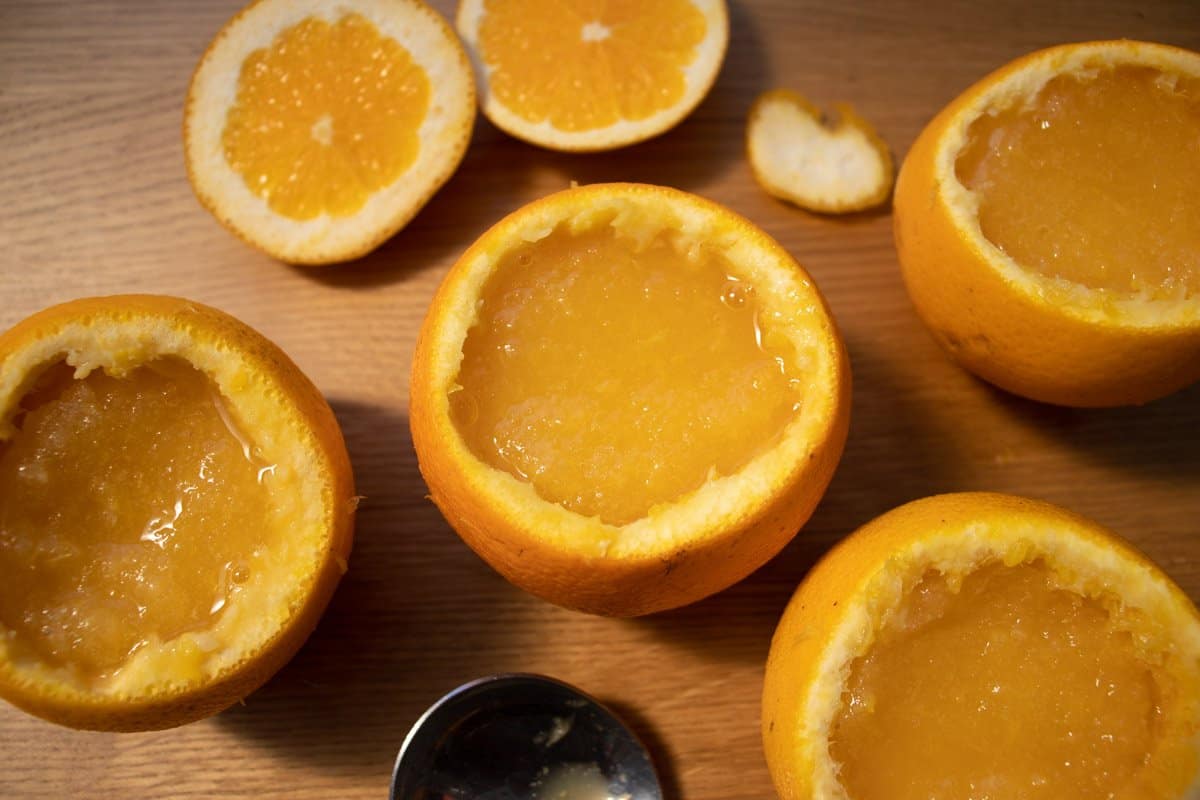
Step 5. Divide the chilled orange sorbet mixture equally between the orange skins.
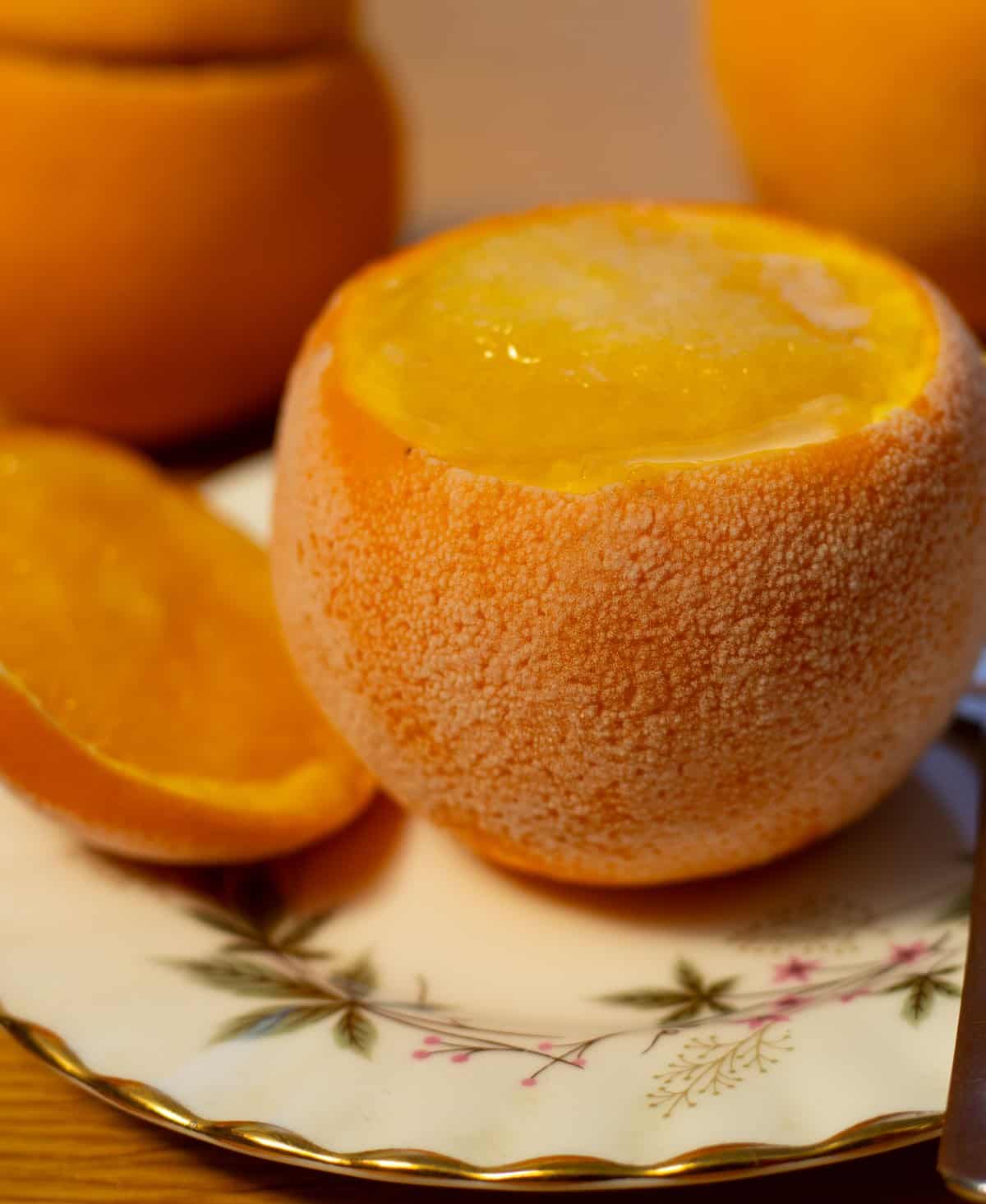
Step 6. Place the filled orange skins in a covered container in the freezer. Freeze the tops of the oranges separately. The orange sorbet mixture will expand upon freezing, as can be seen in this photo.
🍊 Which Oranges are Best for Sorbet?
As we primarily need orange juice for this summer treat, the juiciest, ripe orange you can find the better. There are a number of orange varieties to choose from. I used Navel Oranges to make the Orange Givrées. These were the only oranges on sale in my local supermarket at the time, and so not so much chosen but my only option.
Navel Oranges are easy to identify as their base resembles a bellybutton (navel), this appearance apparently caused because the Navel Orange tries to grow a second orange from this point. My family and I found that the Navel Oranges made a great tasting Orange Sorbet, but given a choice I might have gone for the Valencia Orange.
Navel Oranges vs Valencia Oranges vs Blood Oranges
Three types of oranges seem to stand out as being a good choice for making an orange sorbet: Navel Oranges, Valencia Oranges and Blood Oranges.
Whilst Navel Oranges are apparently very popular for eating fresh, according to a paper from the University of Arizona Cooperative Extension "Valencia oranges are most often processed because of their excellent quality juice which has a deep orange color, high sugar content and an unparalleled richness of flavor. This is the primary fruit processed in Florida for juice."
Although Valencia Oranges seem to win out on the juice front, another article looking at the differences between Valencia Oranges and Navel Oranges states that, "While Valencia oranges have a bit of bitter tang mixed in with their sweetness, Navel oranges are simply quite sweet.".
So, maybe Navel Oranges win out after all. Another point in favour of Navel Oranges is that they are seedless. One less chore, no seeds to remove.
A final factor, though, worth noting on Navel Oranges, is that their juice turns bitter hours after it is squeezed. This is because of the high level of the bitter chemical limonin in Navel Oranges, which is present in the white pith and which gets into the juice during the extraction process.
We didn't notice any bitterness when eating the orange sorbet shown in the photographs, so perhaps freezing the juice slowed down the various chemical processes that bring about this bitterness.
Last but not least, if you want to create a dramatic effect with your orange treat, Blood Oranges are the ones to choose. The orange of the peel will be contrasted beautifully with the ruby red of the blood orange sorbet itself. The juiciness and sweetness of the Blood Oranges will depend upon the variety.
What Makes a Successful Sorbet?
There are two key components to a successful sorbet. They are flavour (no surprises there!) and texture.
A sorbet is essentially fruit juice or fruit puree that is frozen. So, the choice of fruit ultimately determines the flavour. However, the flavour of a sorbet is usually enhanced by:
- added sugar. Sugar also plays a role in the texture of the sorbet. More on this below.
- added acid. Freezing food can alter flavours and dull them. Adding acid (such as citrus juice) helps to counter this. Don't leave out the lemon juice in the recipe. It helps to draw out the flavour.
There are some ingredient ratios that help ensure your sorbet recipe success. Harold McGee advises in his book, On Food and Cooking, that sugar may make up to 25% to 35% of the sorbet mixture, and acid up to 0.5% of the sorbet mixture. The overall sugar to acid ratio should be similar to that of watermelons, which is 30-60:1.
Since this recipe works so well, I can only assume it meets all these parameters. I have to confess that I haven't checked!
For a successful sorbet, not only must it taste good, but it must also have the right consistency and texture. A good sorbet is often described as a creamy sorbet, and by creamy we mean here that the sorbet has a soft, smooth consistency.
A creamy sorbet is easy to scoop and the creamy texture also enhances the flavour. A gritty sorbet, which you will get if the sorbet forms ice crystals as it freezes, does not taste great.
Ice crystals are described by Dr Stuart Farrimond, in his book The Science of Cooking, as "the enemy of smooth ice cream". Although we are dealing with sorbet here, the principles for combatting ice crystals remain the same.
How to Prevent the Formation of Ice Crystals and Make Creamy Sorbet
For a creamy sorbet, we want the ice to have formed small crystals that slide easily past each other. This is what will make the frozen sorbet soft, with a smooth icy texture. We can achieve this in a number of ways:
- Mechanical breaking of the crystals. Undisturbed water freezes to create a solid block of ice. Break that ice crystal structure up whilst the water freezes, and you will no longer have a single block of ice. This is the key reason for using an ice cream maker. The ice cream maker continuously churns the sorbet (or ice cream), as it freezes, ensuring that large ice crystals are unable to form.
- Quick Freezing. According to The Science of Cooking, the faster the freezing, the smaller the crystals. Freezing in a shallow container will help the sorbet to freeze faster, due to the larger surface area. I didn't use this technique when making the sorbet photographed, but will definitely try this out the next time I make this sorbet.
- Bits of Fruit. Bits of fruit (fruit debris) help to soften the fruit sorbet by acting as a lubricant for the ice crystals. Harold McGee explains that the more debris there is, the easier it is for the crystals to slide past one another when pressed (such as with a spoon). Solids also help with the formation of small crystals.
- Sugar. Sugar has similar functions to the fruit debris. It acts as a lubricant and helps with the formation of small ice crystals. Corn syrup is sometimes used to replace part of the sugar since it helps to soften the sorbet without adding as much sweetness.
Incidentally, sorbets have about double the amount of sugar as ice cream. Harold McGee explains that this is because ice creams contain fat and protein which help to soften the texture.
Sorbet or Sherbet?
In the United States a small amount of milk solids is sometimes added to fruit ices (about 3-5%), to help soften the texture. These iced desserts are called sherbets. A sorbet is dairy-free. So if you add a tablespoon or two of cream to this Orange Sorbet, it will be transformed into orange sherbet.
Sherbet has a completely different meaning in the UK. It is a fizzy type of sweet. Flying Saucer Sweets such as these, with a fizzy sherbet centre, were really popular when I was at school.
Food Mill (Mouli) or Blender?
I used a food mill to puree the orange flesh. I found this worked really well since it strained the larger pieces of orange, including the bitter pith, at the same time as pureeing the orange.
You could also use a food processor or hand held immersion blender (stick blender) to mash up the orange. I haven't yet tested this out, and would expect it to be quicker than using a food mill.
However, I think that before blending it would be best to pick out as much of the pith as possible. Otherwise, the bitterness from the pith could taint the flavour of the sorbet. Alternatively, you may wish to try straining the puree. However, I'm not sure how effective that will be if the pith has been blitzed as well.
Felicity Cloake found in her recipe trials that if you do not strain the mixture after using a food processor, it gives the finished sorbet a "vaguely woolly texture". You have been warned!
Sorbet works particularly well with citrus fruits. They also provide the perfect container in which to serve the sorbet, their own peels.
Many versions of Orange Givrées use a classic sorbet method, in which sugar and water are heated to make a simple syrup and the juice from fresh oranges is added to the syrup. The sorbet mixture is then churned in an ice cream machine before the frozen sorbet is packed into chilled orange skins.
In this recipe, the syrup stage is completely left out, and the ice cream maker stage is replaced by the hand mashing or whisking of the sorbet in stages.
I came across this method for making orange sorbet in the very first cookbook I ever owned, Menus de la Famille Moderne. A great cookbook for simple recipes needing few ingredients. This fresh orange sorbet recipe is no exception.
💭 More Ideas
- Strawberries. A serving tip from the great chef Auguste Escoffier: dip 3 or 4 strawberries first into Curaço (an orange liqueur made from the peel of bitter oranges) and then into caster sugar. Top the Orange Sorbets with these drunken strawberries before serving. From his book Ma Cuisine. If you don't have Curaço, you can of course use another orange liqueur, such as Grand Marnier or Cointreau.
- Biscuits. Serve these summery treats with delicate Lemon Butter Biscuits.
👨🏻🍳 Top Tips
- Sweeten to taste. If you wish to make sure that the sorbets are sweetened to your taste, vary the amount of sugar by adding the sugar in stages, tasting at each stage once the sugar is completely dissolved.
- Orange tops. Freeze the orange tops separately from the orange skins that have been filled with the orange sorbet. By doing this you will avoid the problem of the tops freezing to the sorbet.
- Freezer container. Place the oranges in an airtight container for freezing. This ensures the sorbet does not absorb any odours from the freezer.
- Before serving. Take the frozen oranges out of the freezer about 15 minutes before serving. The sorbets will thaw slightly, making it easier to scoop out.
📋 Recipe Card

Easy Fresh Orange Sorbet (without an ice cream maker)
Ingredients
- 4 oranges (medium or large)
- 4 tablespoon sugar
- ½ lemon
Instructions
- Orange Prep. Slice the tops off the oranges. Remove the orange flesh from the orange rind using a sharp knife. Put the orange flesh (pulp and juice) into a bowl. Check the orange skins sit steadily on a flat surface. If not, cut a thin slice from the bottom of the orange to make it flat, making sure you do not cut into the hollowed out part.
- Blend and Strain Oranges. Blend the orange pulp using a hand mouli or an electric blender. The mouli both blends and strains the orange pulp. If using an electric blender, try to remove as much of the pith before blending and strain the orange puree using a wire strainer.
- Combine ingredients. Squeeze the lemon juice from the lemon and add to the strained orange pulp. Add the sugar to the fresh juice orange mixture and stir in thoroughly using a fork until completely dissolved.
- Half freeze. Place the bowl containing the orange sorbet mixture into the freezer, until the mixture is half frozen. This takes about 2 to 3 hours. Remove from the freezer and mash the frozen pulp using a fork.
- Fill the orange skins. Divide the chilled orange sorbet mixture equally between the orange skins.
- Second freeze. Place the filled orange skins in a covered container in the freezer. Freeze the tops of the oranges separately. The orange sorbet mixture will expand upon freezing.


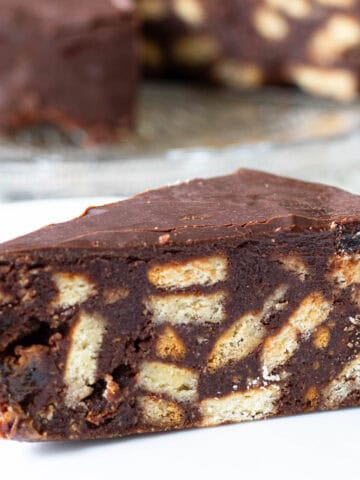

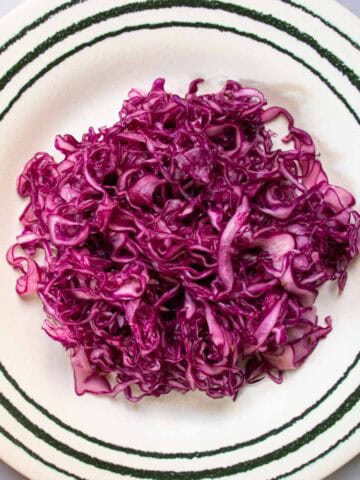
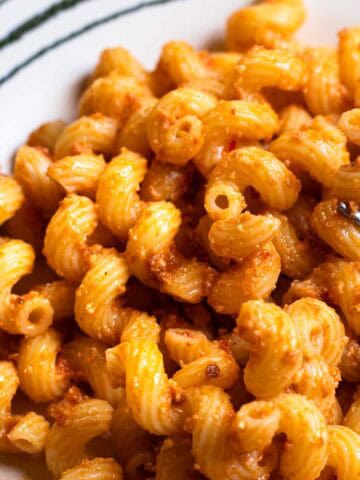
Leave a Reply